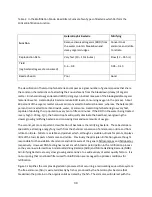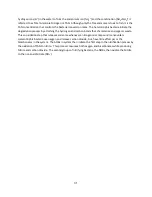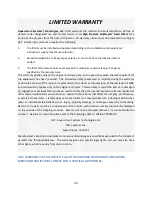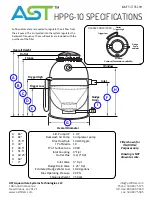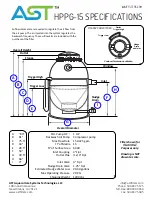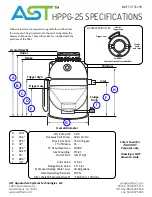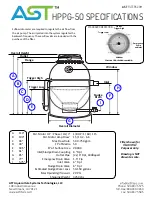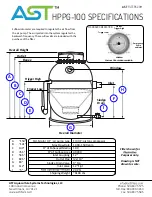
30
Table 2. In the Biofiltration Mode, Bead Filters Cultivate Two Types of Bacteria which Perform the
Critical Biofiltration Function.
Function
Heterotrophic Bacteria
Nitrifying
Remove dissolved organics (BOD) from
the water column; breakdown and
decay organic sludges.
Convert toxic
ammonia and nitrite
to nitrate.
Reproduction Rate
Very fast (10 – 15 minutes)
Slow (12 – 36 hrs)
Yield
(mg bacteria/mg waste consumed)
0.6 – 0.8
0.05 – 0.10
Bead adhesion
Poor
Good
The classification of heterotrophic bacteria encompasses a great number of genera/species that share
the common characteristics of extracting their nourishment from the breakdown (decay) of organic
matter. Biochemical oxygen demand (BOD) is largely an indirect measure of the biodegradable organic
material in water. Heterotrophic bacteria reduce BOD levels, consuming oxygen in the process. About
60 percent of the organic matter consumed is converted to bacterial biomass; whereas, the balance (40
percent) is converted to carbon dioxide, water, or ammonia. Heterotrophic bacteria grow very fast,
capable of doubling their population every ten to fifteen minutes. If the BOD in the water being treated
is very high (> 20 mg-O
2
/l), the heterotrophs will quickly dominate the bead bed, overgrowing the
slower growing nitrifying bacteria and consuming tremendous amounts of oxygen.
The second, yet more important, classification of bacteria is the nitrifying bacteria. These bacteria are
specialists, extracting energy for growth from the chemical conversion of ammonia to nitrite and from
nitrite to nitrate. Nitrate is a stable end product which, although a valuable nutrient for plants, displays
little of the toxic impacts of ammonia and nitrite. Previously the principle nitrification genera thought
responsible for the oxidation of ammonia and nitrite were of the genera Nitrosomonas and Nitrobacter,
respectively. However DNA testing has reveal a much broader participation in the nitrification process
so they are now referred to as Ammonia Oxidizing Bacteria (AOB) and Nitrite Oxidizing Bacteria (NOB).
All nitrifying bacteria are very slow growing and sensitive to a wide variety of water quality factors. It is
not surprising that most bead filters used for biofiltration are managed to optimize conditions for
nitrification.
Figure 3 simplifies the complex degradation processes that occurring a recirculating aquaculture system.
The free ammonia (NH
3
) is excreted directly by fish or produced by the heterotrophic bacteria that
breakdown the proteins in the organic solids excreted by the fish. The ammonia will interact with the















